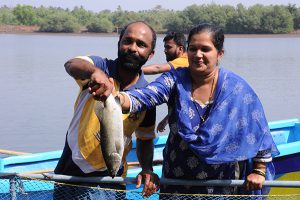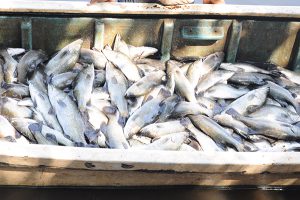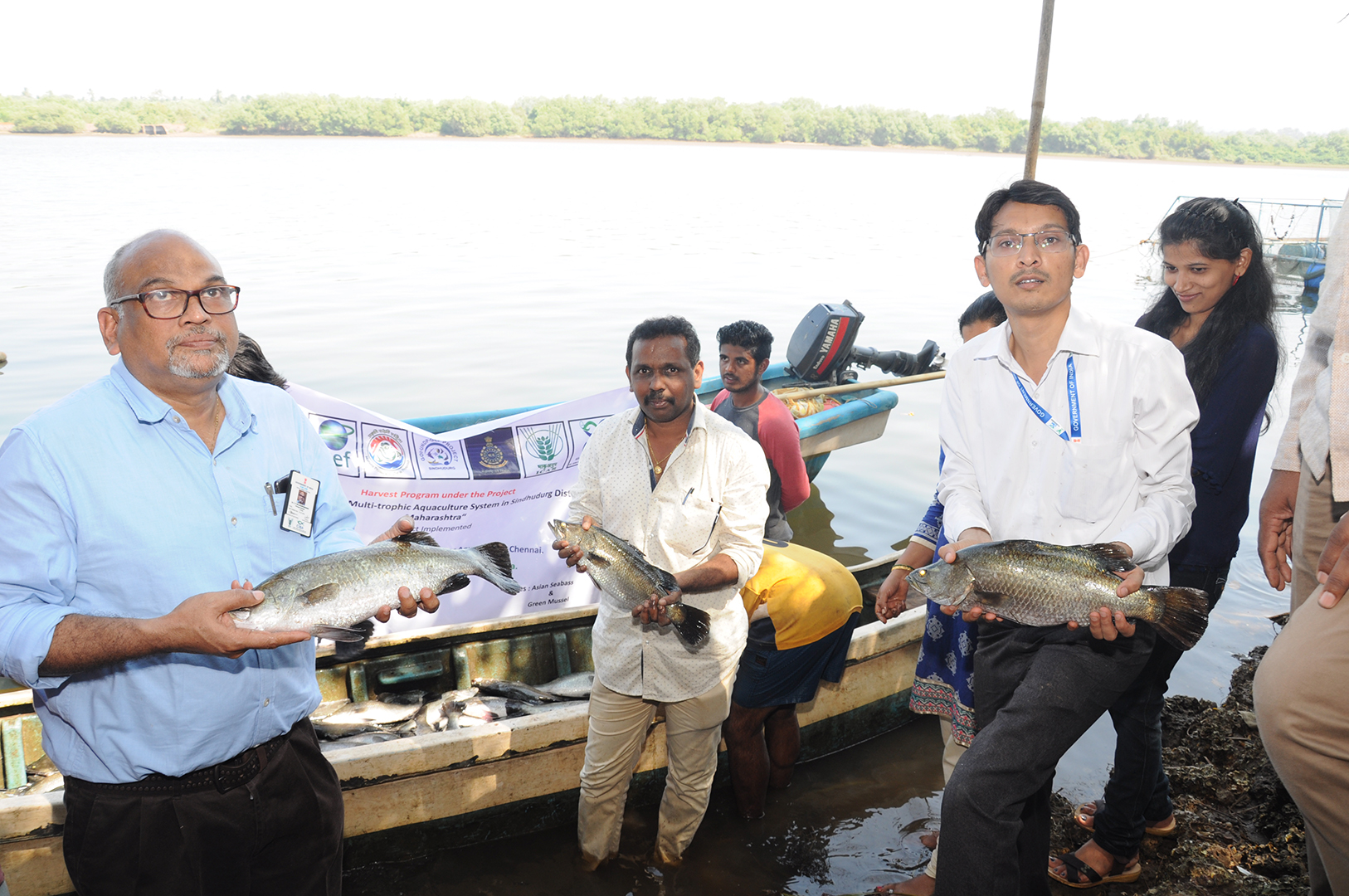Integrated multi-trophic aquaculture, IMTA, is the farming of species from different trophic levels with complementary ecosystem function. Here proximity of the farming communities to the brackish water resources, helped to optimize the nutrient utilization/balance as well as economic returns, through farming of diverse species viz. fishes, bivalves, shrimps and crabs, catering to different ecological niches. It is one of the few options for ensuring the long-term sustainability of brackish water aquaculture along with environmental sustainability. This project was funded by the mangrove cell of Maharashtra state as a subprogram of “Mainstreaming coastal marine biodiversity into production sectors”. Several models of IMTA, for example: land-based as well as open-water systems were evaluated. An open water brackish water cage unit (BCU) was set in Gad river, Juva Pankhol, Malvan with a cage size of 8X 4X 1.2 m, with an outer protective cover with 40 mm mesh, comprising of four inner cages of 3 X 2 X 1 m with smaller 16 mm mesh size. The cage was stocked with 800 sea bass nursery-reared fry (TL=120 mm; 19.5 g), with proper acclimatization on April 15, 2017. Fishes were fed with locally available low valued fish by-catch initially at the rate of 15% of wet biomass and gradually reduced to 3%. Additionally fifty ropes of green mussel (Perna virdis), with each rope having about fifty spats were set at the vicinity of the cage as an extractive crop. After nine months of rearing, seabass has grown to an average size of 990.10 g with a total production of 360 kg, with 63% survival. The net income realised during the 9 month period was ₹ 167000/ with an average monthly income for ₹ 18555 for the group for the time invested about 2 hrs per day. This program demonstrates that the brackishwater cage culture system under IMTA mode is a viable option for the alternative livelihood and to increase the income of fishers


